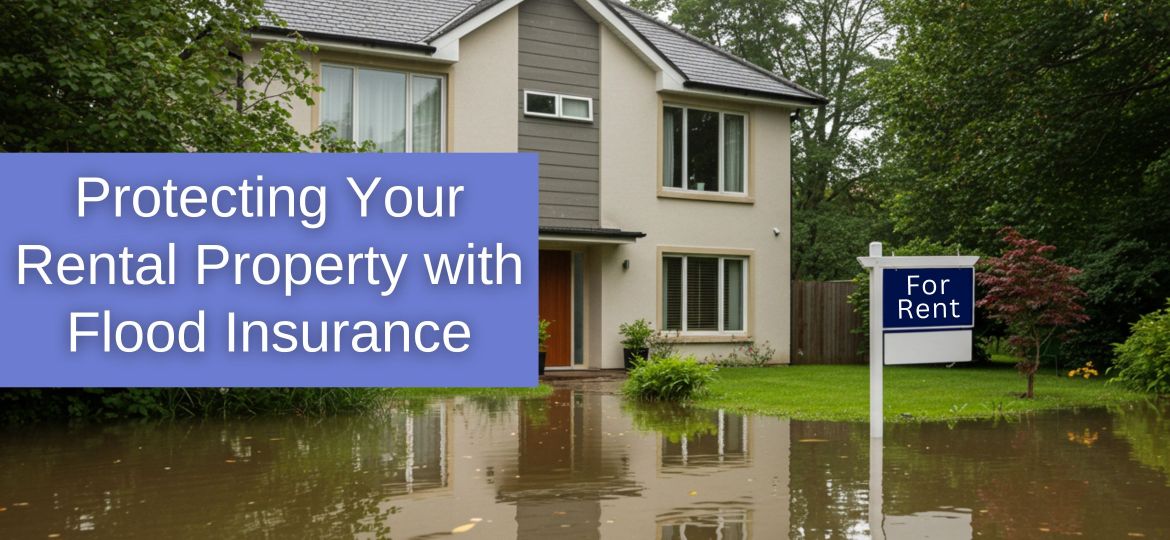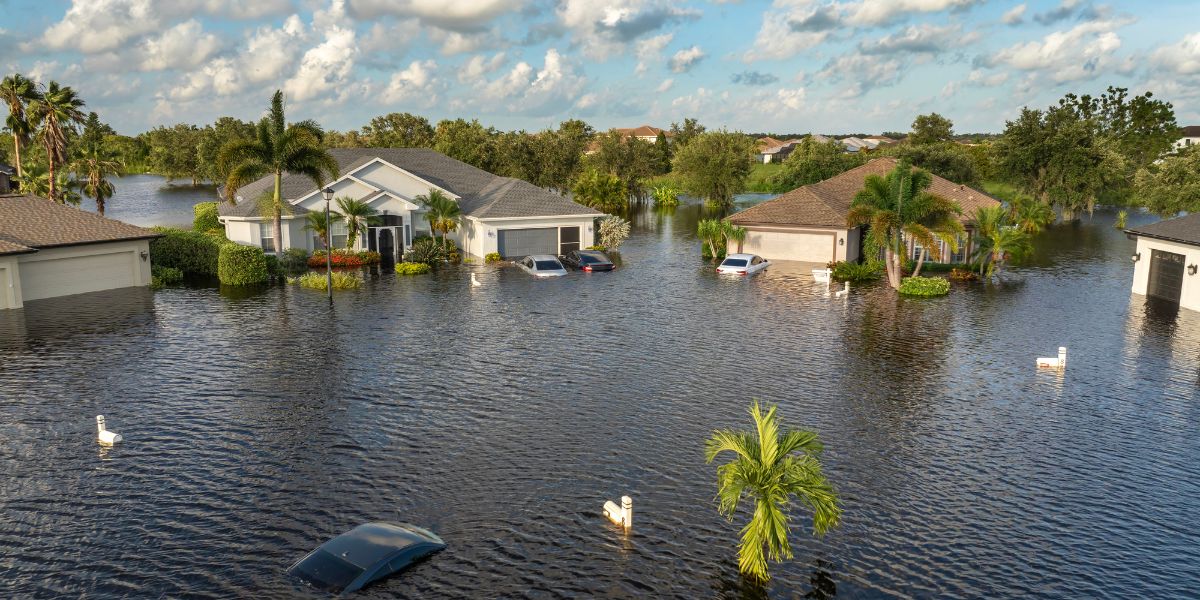
As a landlord, your rental property is more than just a source of income—it’s a major investment that deserves strong protection. While many property owners carry landlord insurance to cover fire, theft, and liability, flood damage is often left out of the equation. That’s a costly oversight.
Flooding is the most common and expensive natural disaster in the United States, yet it’s not covered by most standard property insurance policies. Whether your rental is located in a high-risk flood zone or not, it’s essential to understand how flood insurance works, what it covers, and why it matters for both you and your tenants. Taking the right steps now can help you avoid major financial and legal setbacks later.
What Landlords Should Know About Flood Coverage
Flood insurance is a specialized policy designed to cover water damage caused by natural flooding events—such as heavy rain, hurricanes, or overflowing rivers. If you assume your landlord policy includes flood protection, you’re not alone—but unfortunately, that assumption can lead to expensive surprises.
Here are some key things every landlord should know:
- Standard property insurance doesn’t cover flooding. You’ll need to purchase a separate flood insurance policy, either through the National Flood Insurance Program (NFIP) or a private insurer.
- Flood risk isn’t limited to high-risk areas. In fact, FEMA reports that over 20% of flood claims come from properties in low- to moderate-risk zones. Even a few inches of water can cause tens of thousands of dollars in damage.
- Coverage typically includes the building, not the contents. For landlords, this means protection for the structure of your property—foundation, walls, systems like electrical and plumbing, and appliances you own (like stoves or washers). If you furnish your rentals, you’ll need contents coverage to protect that property, too.
- Flood zone designation affects your rates and requirements. Properties in high-risk zones with a mortgage from a federally regulated lender are required to carry flood insurance. However, even if it’s not required, having coverage is still a smart move.
By understanding the limitations of your current insurance and the specific protections flood insurance offers, you can make informed decisions that safeguard your rental property and your financial stability.
Coverage Options for Property Owners vs. Tenants
Flood insurance needs can vary significantly depending on whether you own or rent the property. As a landlord, it’s your responsibility to protect the structure and any personal property you provide. However, your tenants have their own belongings to consider—and their needs shouldn’t be overlooked. Understanding the difference in coverage helps ensure everyone is properly protected when disaster strikes.
For Property Owners
As a landlord, whether it’s your first rental property or your 10th, your primary concern is the physical structure of the rental property. Flood insurance for property owners generally includes:
- Building Coverage: This protects the foundation, walls, electrical and plumbing systems, HVAC units, water heaters, and built-in appliances. It’s essential coverage that helps you repair or rebuild after a flood event.
- Contents Coverage (Optional): If you supply furniture, appliances, or other items for tenant use, you can add contents coverage to protect those landlord-owned possessions.
Keep in mind that flood insurance has limits and exclusions, and some policies may not cover damage to basements or detached structures unless specifically included. Working with a knowledgeable agent can help you tailor your coverage to match the property’s needs.
For Tenants
While your flood insurance policy protects the building, it does not extend to your tenant’s personal belongings. That’s why renters should consider purchasing their own renter’s flood insurance policy.
This type of coverage helps tenants replace or repair items such as:
- Furniture
- Clothing
- Electronics
- Personal keepsakes
As a landlord, you’re not required to provide this coverage, but you can—and should—educate tenants about the importance of protecting their belongings. Including a note about flood insurance in your lease or welcome packet is a helpful way to start the conversation and clarify responsibilities.
When both landlords and tenants are covered appropriately, it reduces the risk of disputes and ensures faster recovery after a flood.
Legal and Financial Implications of Flood Damage
Flood damage isn’t just inconvenient—it can trigger a cascade of legal and financial problems for rental property owners. Without the right insurance in place, landlords may find themselves responsible for significant repair costs, potential loss of rental income, and even legal claims from tenants.
Uninsured Repair Costs and Loss of Income
Floods can cause extensive damage to floors, walls, electrical systems, and major appliances. If you’re not covered, these repairs come straight out of your pocket. In addition, you may lose rental income while the property is being restored. Some flood insurance policies may offer limited loss of use coverage, but it’s important to confirm this with your provider or consider additional coverage options.
Legal Liability and Tenant Disputes
If tenants experience property loss or are forced to vacate due to unsafe living conditions, they may look to you for compensation—even if the flood wasn’t your fault. While you may not be legally obligated to replace their belongings, misunderstandings can quickly escalate into disputes or lawsuits. Tenants may claim you failed to maintain a safe or habitable space, especially if you neglected to inform them of flood risks or didn’t carry appropriate insurance.
Code Compliance and Rebuilding Delays
After a major flood, rebuilding often requires compliance with updated local codes or ordinances. Without proper insurance, you could face delays and added expenses just to bring the property back up to standard. Some policies include increased cost of compliance (ICC) coverage, which helps cover the cost of these upgrades—but only if you have the right policy in place beforehand.

How to Get the Right Flood Insurance for Your Rental Property
Choosing the right flood insurance starts with understanding your property’s risk and working with an experienced insurance professional. Here’s how landlords can ensure they’re adequately protected:
1. Assess Your Flood Risk
Start by identifying whether your rental property is in a designated flood zone. FEMA’s flood maps can help, but remember—floods can happen anywhere. Even low-risk areas may benefit from coverage, especially given the growing unpredictability of weather patterns.
2. Understand Policy Options
Flood insurance is available through the National Flood Insurance Program (NFIP) and private insurers. NFIP policies have standardized coverage limits and waiting periods, while private policies may offer higher limits, shorter waiting periods, or additional protections like loss of rental income. Your insurance agent can help you compare both options.
3. Bundle and Customize Coverage
Landlords should focus on building coverage, and if you provide any furnishings or appliances, consider adding contents coverage. Some providers offer bundling options or multi-policy discounts if you carry additional landlord or umbrella insurance.
4. Review and Update Regularly
Your insurance needs can change with property upgrades, location shifts, or regulatory updates. Make it a point to review your flood insurance annually, especially before renewal, to ensure your coverage still fits your property’s profile.
Conclusion
Floods are unpredictable—but your financial future doesn’t have to be. As a rental property owner, flood insurance isn’t just a precaution; it’s a key part of protecting your investment, income, and peace of mind. By understanding what’s covered, what’s not, and how flood insurance works for both landlords and tenants, you can take smart steps to prepare for the unexpected.
Need help choosing the right flood policy for your rental property? The team at Fassbender Insurance is here to guide you. Contact us today for a personalized quote and expert advice tailored to your property and coverage needs.


